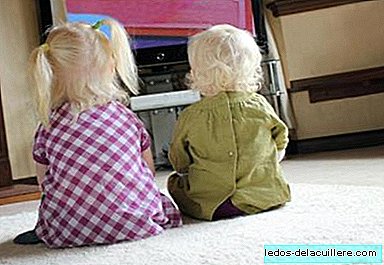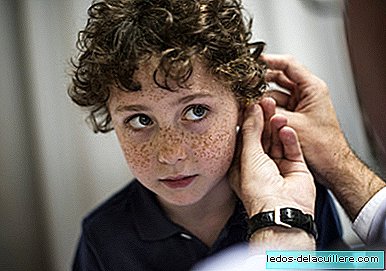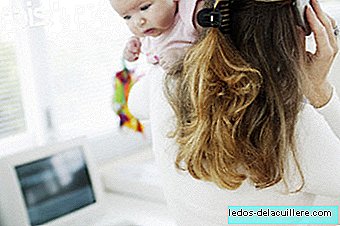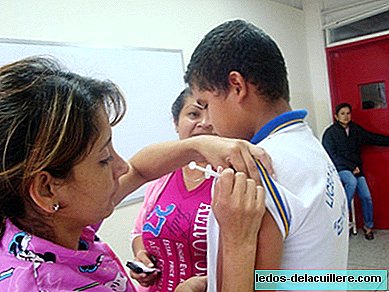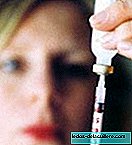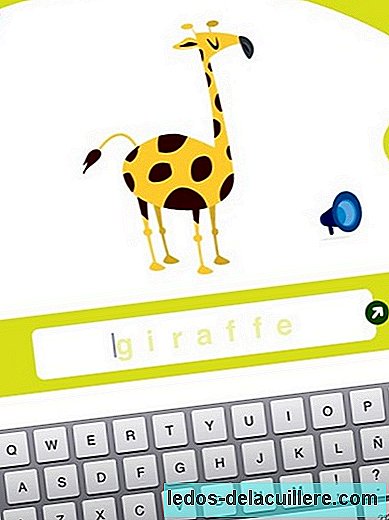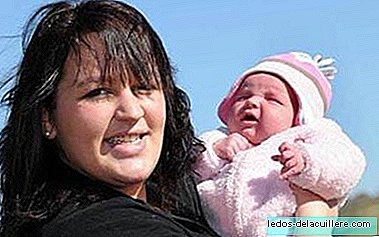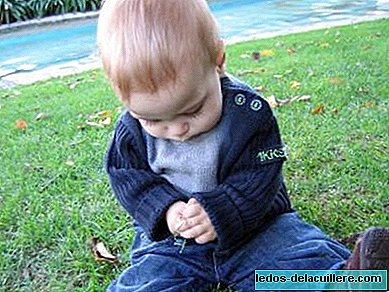
After seeing a few days ago what is valued at the time of detect abnormalities in psychomotor development in children up to six months Today we will expand the information explaining how it is done with children up to 9 months.
To assess a 9-month-old child (although it can be done at any age) we will draw a vertical line under that age and examine the child based on the actions that have been left (including those we commented a few days ago, in entries from 0 to 3 months and from 3 to 6 months) and those that are crossed by the line, adding the stars as explained in the entry of the Llevant Table.
Exploration of the area of sociability
• Play hide and seek * (6.7; 7.8; 12.2) Material needed (M): Folio Exploration (E): The examiner makes a small hole in a folio. When the child is looking at him, he hides the face behind the sheet. Then you should take your head off the side of the sheet twice, say "hello" and look through the hole to see if you expect the examiner to appear. Positive response (RP): Look in the direction where the examiner's head had previously appeared. • Search for missing object ** (7.3; 8.4; 10.5) M: Toy car or other object of interest and small sheet or cloth. E: With the child sitting in front of the table, claim your attention towards a car or other toy located on the table, about 13-15 cm. of the. When you are about to take it, cover the toy with the small sheet or cloth. RP: If you uncover quickly looking at the hidden object and take it. It is not valid if you only touch the small sheet or cloth, even if you touch it you discover the toy.
• Collaborates when dressed ** (8.2; 13; 16) E: Ask the mother if it helps when she is dressed. RP: If it helps when you are dressed: bringing the arm towards the sleeve, stretching the sweater to pass the head, etc.
Language area exploration
• Unspecifically says “mom / dad” ** (7.6; 8.8; 9.6) E: Observe if during the test he says so at any given time or ask the mother if he says so. It is not necessary to associate it with people. RP: Let him say it.
• Includes a ban ** (8.3; 10.4; 14.8) E: Observe or ask the mother if she stops at an order issued in a habitual tone of voice, for example: "No, no", "Do not put that in your mouth" etc. RP: It does or the mother responds affirmatively.
• Recognize your name ** (8.8; 10.5; 12) E: Tell the child 5 or 6 different words and, among them, his name pronounced in the same tone as the others. RP: If you distinguish his name among the other words.
Exploration area exploration
• Lower clamp ** (7; 8; 10) M: Small object. E: Place the child sitting on his mother's lap or in a chair, so that he can easily place his hands on the table. Drop a small object directly in front of the child, within its field of action. The examiner can point or touch it to attract your attention. RP: If you take the object between the phalanges of the index and thumb fingers without their opposition (similar to if we took it with the index and middle fingers).
• Upper clamp *** (8.5; 11.5; 13.5) M: Small object. E: Place the child sitting on his mother's lap or in a chair, so that he can easily place his hands on the table. Drop a small object directly in front of the child, within its field of action. The examiner can point or touch it to attract your attention. RP: If you take the object opposing the fingertips of the index and thumb fingers.
Postural area exploration
• Turning from prone to supine position * (6.3; 7; 8.8) E: Place the child upside down on a flat and hard surface. RP: If it passes by itself to supine position.
• Side skydiver reactions *** (6.3; 7.2; 9) E: Keep the child sitting on a hard surface, holding him by the trunk. The examiner will stand behind the child, quickly leaning to one side and then to the other. RP: If you stretch the corresponding arm and rest on your hand. ATTENTION: a marked asymmetry is a warning sign
• Stable seating *** (7.3; 8; 9.5) E: Keep the child sitting on a hard surface without holding or inciting him to pick up an object. RP: If you keep sitting without losing your balance. You should not use your hands as support.
• Stands with support ** (8.2; 9; 11) E: Observe if the child remains standing on or supported by a support: chair furniture ... RP: If it does so for more than five seconds.
• You feel alone ** (9; 10.5; 13.1) E: Observe or ask the mother if she sits by herself from casting (indifferently supine or prone). RP: Do it or affirmative answer from the mother.
With everything explained today it is already possible to detect possible delays in the psychomotor development of children up to 9 months. In the next few days we will publish the following entry with the items to evaluate children up to 15 months.



